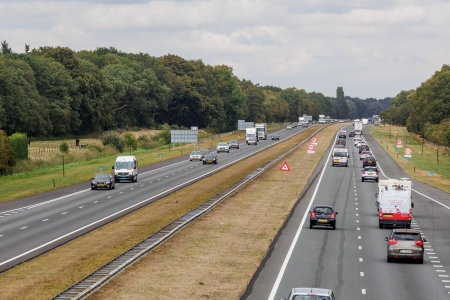A safe median should prevent vehicles from ending up on the opposite side of the road and crashing head-on with oncoming traffic. This is particularly important when the driving speed of motor vehicles is above 70 km/h (see SWOV fact sheet Sustainable Road Safety). In addition, the median should be designed in such a way that 1) a vehicle that drifts (left) from the lane can be steered back into the lane in a controlled manner, and 2) the severity of crashes that can no longer be prevented is limited by a flat, sufficiently load-bearing roadside without unshielded obstacles. For further explanation, see the question What does a safe roadside (or outer verge) look like?
Many rural medians are relatively narrow and fitted with guard rails. Such medians are safe if the guard rails are forgiving and if - on roads with more lanes in each driving direction – they are positioned outside the so-called recovery zone. This is a surfaced lane to the left of the leftmost lane with a preferred width of 2.5 metres, intended to allow a vehicle to come to a stop in case of emergency. The median - behind the guard rails - should provide sufficient space for vehicle occupants to find a relatively safe haven.
Safe medians without guard rails or other shielding structures, but with, for example, a ditch, have at least one clear zone on both sides. A median designed with only a clear zone should be so wide that vehicles cannot end up on the opposite side of the road. However, such a width is hardly ever feasible in practice.
